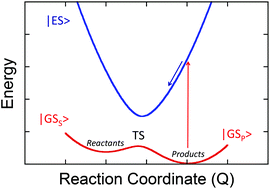Xanthine oxidase–product complexes probe the importance of substrate/product orientation along the reaction coordinate†
Abstract
A combination of reaction coordinate computations, resonance Raman spectroscopy, spectroscopic computations, and hydrogen bonding investigations have been used to understand the importance of substrate orientation along the xanthine oxidase reaction coordinate. Specifically, 4-thiolumazine and 2,4-dithiolumazine have been used as reducing substrates for xanthine oxidase to form stable enzyme-product charge transfer complexes suitable for spectroscopic study. Laser excitation into the near-infrared molybdenum-to-product charge transfer band produces rR enhancement patterns in the high frequency in-plane stretching region that directly probe the nature of this MLCT transition and provide insight into the effects of electron redistribution along the reaction coordinate between the transition state and the stable enzyme-product intermediate, including the role of the covalent Mo–O–C linkage in facilitating this process. The results clearly show that specific Mo-substrate orientations allow for enhanced electronic coupling and facilitate strong hydrogen bonding interactions with amino acid residues in the substrate binding pocket.

- This article is part of the themed collection: Frontiers in Spectroscopic Techniques in Inorganic Chemistry


 Please wait while we load your content...
Please wait while we load your content...